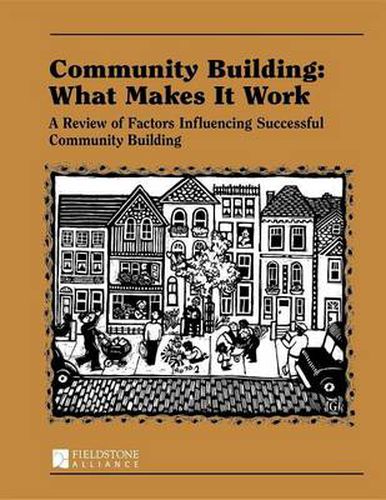Readings Newsletter
Become a Readings Member to make your shopping experience even easier.
Sign in or sign up for free!
You’re not far away from qualifying for FREE standard shipping within Australia
You’ve qualified for FREE standard shipping within Australia
The cart is loading…






This title is printed to order. This book may have been self-published. If so, we cannot guarantee the quality of the content. In the main most books will have gone through the editing process however some may not. We therefore suggest that you be aware of this before ordering this book. If in doubt check either the author or publisher’s details as we are unable to accept any returns unless they are faulty. Please contact us if you have any questions.
This practical guide shows you what really does (and doesn’t) contribute to community building success. It reveals 28 keys to help you build community more effectively and efficiently. You won’t find another single report that pulls out common lessons from across community building initiatives about what works. You can use this report to find out what community characteristics contribute to successful community building, make sure key processes such as communications and technical assistance are in place, determine if community leaders or organizers have essential qualities such as a relationship of trust and flexibility, and evaluate the likely success of a proposed project or get a struggling effort back on track. Examples, definitions, and a detailed bibliography make this report even more valuable. Wilder Research Center scoured the literature, contacted resource centers, and spoke with community development experts across the country. The result is concrete, understandable research based on real-life experiences.
The 28 factors in this report are grouped by: 1) characteristics of the community, 2) characteristics of the community building process, and 3) characteristics of community building organizers.
Detailed descriptions and case examples of how each factor plays out are followed by practical questions you can use to assess your work. In addition to the factors, you also get working definitions for community, community building, and many other terms; a list of resources and contacts in the field; an explanation of how the research was done; and a complete bibliography of all the studies used in this report. Now you can save time looking for best-practice information. With this concise report, you’ve got the tools to help your community building work succeed!
$9.00 standard shipping within Australia
FREE standard shipping within Australia for orders over $100.00
Express & International shipping calculated at checkout
This title is printed to order. This book may have been self-published. If so, we cannot guarantee the quality of the content. In the main most books will have gone through the editing process however some may not. We therefore suggest that you be aware of this before ordering this book. If in doubt check either the author or publisher’s details as we are unable to accept any returns unless they are faulty. Please contact us if you have any questions.
This practical guide shows you what really does (and doesn’t) contribute to community building success. It reveals 28 keys to help you build community more effectively and efficiently. You won’t find another single report that pulls out common lessons from across community building initiatives about what works. You can use this report to find out what community characteristics contribute to successful community building, make sure key processes such as communications and technical assistance are in place, determine if community leaders or organizers have essential qualities such as a relationship of trust and flexibility, and evaluate the likely success of a proposed project or get a struggling effort back on track. Examples, definitions, and a detailed bibliography make this report even more valuable. Wilder Research Center scoured the literature, contacted resource centers, and spoke with community development experts across the country. The result is concrete, understandable research based on real-life experiences.
The 28 factors in this report are grouped by: 1) characteristics of the community, 2) characteristics of the community building process, and 3) characteristics of community building organizers.
Detailed descriptions and case examples of how each factor plays out are followed by practical questions you can use to assess your work. In addition to the factors, you also get working definitions for community, community building, and many other terms; a list of resources and contacts in the field; an explanation of how the research was done; and a complete bibliography of all the studies used in this report. Now you can save time looking for best-practice information. With this concise report, you’ve got the tools to help your community building work succeed!